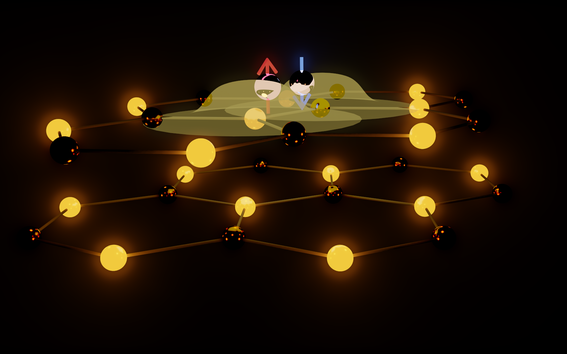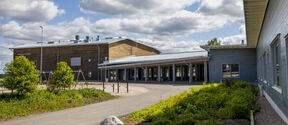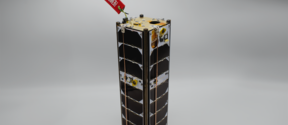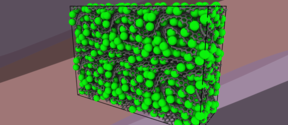New study explains why superconductivity takes place in graphene

Graphene, a single sheet of carbon atoms, has many extreme electrical and mechanical properties. Two years ago, researchers showed how two sheets laid on top of each other and twisted at just the right angle can become superconducting, so that the material loses its electrical resistivity. New work explains why this superconductivity happens in a surprisingly high temperature.
Researchers at Aalto University and the University of Jyväskylä showed that graphene can be a superconductor at a much higher temperature than expected, due to a subtle quantum mechanics effect of graphene’s electrons. The results were published in Physical Review . The findings were highlighted in Physics viewpoint by the American Physical Society, and looks set to spark lively discussion in the physics community.
The discovery of the superconducting state in twisted bilayer graphene was selected as the Physics breakthrough of the year 2018 by the Physics World magazine, and it spurred an intense debate among physicist about the origin of superconductivity in graphene. Although superconductivity was found only at a few degrees above the absolute zero of temperature, uncovering its origin could help understanding high-temperature superconductors and allow us to produce superconductors that operate near room temperature. Such a discovery has been considered one of the “holy grails” of physics, as it would allow operating computers with radically smaller energy consumption than today.
The new work came from a collaboration between Päivi Törmä’s group at Aalto University and Tero Heikkilä’s group at the University of Jyväskylä. Both have studied the types of unusual superconductivity most likely found in graphene for several years.
“The geometric effect of the wave functions on superconductivity was discovered and studied in my group in several model systems. In this project it was exciting to see how these studies link to real materials”, says the main author of the work, Aleksi Julku from Aalto University. “Besides showing the relevance of the geometric effect of the wave functions, our theory also predicts a number of observations that the experimentalists can check”, explains Teemu Peltonen from the University of Jyväskylä.
Read more at:
A. Julku, T. Peltonen, L. Liang, T.T. Heikkilä, and P. Törmä, Phys. Rev. B 101, 060505 (2020)
Physics viewpoint highlighting the article
Further information:
Aleksi Julku, Aalto University Aleksi.Julku@aalto.fi
Teemu Peltonen, University of Jyväskylä Teemu.J.Peltonen@student.jyu.fi
Long Liang, Aalto University, Long.Liang@su.se
Tero Heikkilä, University of Jyväskylä, Tero.T.Heikkila@jyu.fi, tel. +358408054804
Päivi Törmä, Aalto University, Paivi.Torma@aalto.fi, tel., +358503826770
Read more news

Study: Wood is a more cost-effective building material than concrete when emissions are monetized
The costs of the wood-built school and sports hall in Myrskylä were compared to a reinforced concrete alternative — and wood proved clearly more economical when environmental impacts were assigned a monetary value.
Finland’s Foresail-1p science satellite successfully launched into space
The Finnish science satellite Foresail-1p was successfully launched into space after 8 PM Finnish time on Friday 28 November 2025, aboard the Transporter-15 mission from Vandenberg Space Force Base, California.
A paradigm shift: machine learning is transforming research at the atomic scale
Assistant professor Miguel Caro and his research group use and develop machine learning tools to accelerate discoveries from simulation to experiment






